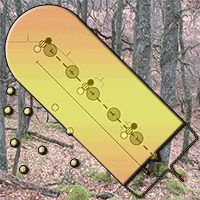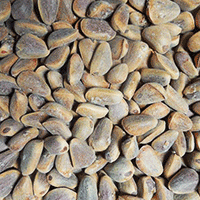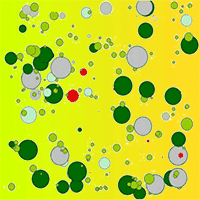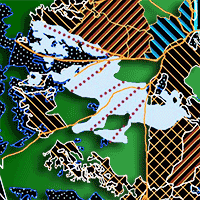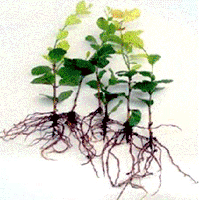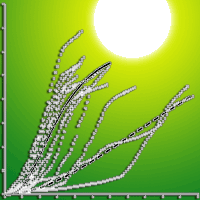
Growth dynamics of the Norway spruce and silver fir understory in continuous cover forestry
Jaroslav Vencurik (1) , Stanislav Kucbel (1), Milan Saniga (1), Peter Jaloviar (1), Denisa Sedmáková (1), Ján Pittner (1), Zuzana Parobeková (1), Michal Bosela (2)
iForest - Biogeosciences and Forestry, Volume 13, Issue 1, Pages 56-64 (2020)
doi: https://doi.org/10.3832/ifor3183-012
Published: Feb 05, 2020 - Copyright © 2020 SISEF
Research Articles
Abstract
The conversion to uneven-aged, mixed-species stands represents one possible way to mitigate the consequences of disturbances in Norway spruce forests in Central Europe. A better understanding of the establishment and growth dynamics of the understory can contribute to a more effective conversion process. Here we investigate the structure of understory, light climate and growth of natural regeneration of Norway spruce and silver fir in two forest stands undergoing conversion to continuous cover forestry. Stand-wise forest inventory was conducted in 1993 and 2013. The natural regeneration was surveyed, and the light conditions and inter-tree competition were quantified in 51 sample plots established across the stands in 2013. Our results suggest that the diffuse radiation strongly affects the height growth of fir and spruce natural regeneration. We do not confirm the effect of local sapling density on the regeneration dynamics. The results further show that fir trees grow faster than spruce under less intensity of diffuse light. Most of the spruce and fir trees reached the upper limit of the lower overstory (DBH 12 cm) at approximately 50 years of age. Thus, more substantial reductions in stand density can lead to a well-differentiated structure in less than five decades. To control the prospective representation of spruce and fir in mixed-species forests undergoing the conversion, managing of light conditions is crucial.
Keywords
Conversion to Selection Forest, Natural Regeneration, Height Growth, Diffuse Light
Authors’ Info
Authors’ address
Stanislav Kucbel
Milan Saniga
Peter Jaloviar
Denisa Sedmáková 0000-0001-5556-0839
Ján Pittner
Zuzana Parobeková
Department of Silviculture, Faculty of Forestry, Technical University in Zvolen, Masarykova 24, 960 53 Zvolen (Slovak Republic)
Department of Forest Management and Geodesy, Faculty of Forestry, Technical University in Zvolen, Masarykova 24, 960 53 Zvolen (Slovak Republic)
Corresponding author
Paper Info
Citation
Vencurik J, Kucbel S, Saniga M, Jaloviar P, Sedmáková D, Pittner J, Parobeková Z, Bosela M (2020). Growth dynamics of the Norway spruce and silver fir understory in continuous cover forestry. iForest 13: 56-64. - doi: 10.3832/ifor3183-012
Academic Editor
Davide Ascoli
Paper history
Received: Jul 03, 2019
Accepted: Nov 28, 2019
First online: Feb 05, 2020
Publication Date: Feb 29, 2020
Publication Time: 2.30 months
Copyright Information
© SISEF - The Italian Society of Silviculture and Forest Ecology 2020
Open Access
This article is distributed under the terms of the Creative Commons Attribution-Non Commercial 4.0 International (https://creativecommons.org/licenses/by-nc/4.0/), which permits unrestricted use, distribution, and reproduction in any medium, provided you give appropriate credit to the original author(s) and the source, provide a link to the Creative Commons license, and indicate if changes were made.
Web Metrics
Breakdown by View Type
Article Usage
Total Article Views: 43358
(from publication date up to now)
Breakdown by View Type
HTML Page Views: 37262
Abstract Page Views: 2795
PDF Downloads: 2528
Citation/Reference Downloads: 12
XML Downloads: 761
Web Metrics
Days since publication: 2141
Overall contacts: 43358
Avg. contacts per week: 141.76
Citation Metrics
Article Citations
Article citations are based on data periodically collected from the Clarivate Web of Science web site
(last update: Mar 2025)
Total number of cites (since 2020): 8
Average cites per year: 1.33
Publication Metrics
by Dimensions ©
Articles citing this article
List of the papers citing this article based on CrossRef Cited-by.
References
Suitability of close-to-nature silviculture for adapting temperate European forests to climate change. Forestry 87: 492-503.
CrossRef | Gscholar
Grundriß des Waldbaus [Silviculture]. Parey Buchverlag, Berlin, Germany, pp. 487. [in German]
Gscholar
Selective cutting radiative regime and natural regeneration in a mixed coniferous forest. In: “Modelling Regeneration Success and Early Growth of Forest Stands” (Skovsgaard JP, Johannsen P eds). Danish Forest and Landscape Research Institute, Horsholm, Denmark, pp. 474-483.
Gscholar
Methods of dendrochronology: applications in the environmental sciences. Kluwer Academic Publishers, Dordrecht, Netherlands, pp. 394.
Gscholar
Waldbau [Silviculture]. Verlag Paul Parey, Hamburg, Berlin, Germany, pp. 350. [in German]
Gscholar
Investigations on recruitment dynamics in Emmental selection forest plots. Schweizerische Zeitschrift für Forstwesen 142: 299-319. [in German]
Gscholar
Relation between photosynthetic photon flux density (PPFD) and growth of silver fir (Abies alba Mill.) seedlings in a forest stand dominated by spruce [Picea abies (L.) Karst.] in the Sudety Mts (SW Poland). Polish Journal of Ecology 53: 177-184.
Online | Gscholar
Silvicultural characteristic of forest trees. Gutenberg, Kraków, Poland, pp. 237. [in Polish]
Gscholar
Effets d’un gradient de lumière sur la croissance en hauteur et la morphologie de la cime du sapin baumier régénéré naturellement [Effects of a light gradient on height growth and the morphology of the crown of naturally regenerated balsam fir]. Canadian Journal of Forest Research 25: 878-885. [in French]
CrossRef | Gscholar
Die Pflanzenassoziationen des Tatra-Gebirges. Teil 7. Die Pflanzenassoziationen und die Flora des Morskie Oko-Tales [Plant associations of the Tatra Mountains. Part 7. Plant associations and flora of the Morskie Oko Valley]. Extrait de Bullettin de l’Academie Polonaise des Sciences et des Lettres 2: 205-272. [in German]
Gscholar
Ecological constitution of the silver fir. In: “Silver Fir in Croatia” (Matić S, Vukelić J, Prpić B, Vidaković M, Klepac D, Glavaš M, Ljuljka B, Figurić M, Jakovac H eds). Tiskara Meić, Zagreb, Croatia, pp. 269-276.
Gscholar
Dynamics of structure and regeneration processes of the forests in various phases of the conversion to a selection forest in forest management unit Korytnica. Vydavatelstvo Technickej univerzity, Zvolen, Slovakia, pp. 82. [in Slovak]
Gscholar
Der Plenterwald und weitere Formen strukturierter und gemischter Wälder [Selection forest and other forms of structured and mixed forests]. Parey Buchverlag, Berlin, Germany, pp. 220. [in German]
Gscholar
Structure and height growth of natural regeneration in selection forests with different Norway spruce proportion in Slovakia. Technical university, Zvolen, Slovakia, pp. 64. [in Slovak]
Gscholar
Silvicultural strategies for conversion. In: “Norway spruce conversion: options and consequences” (Spiecker H, Hansen J, Klimo E, Skovsgaard JP, Sterba H, von Teuffel K eds). Brill, Leiden, Netherlands, pp. 121-164.
Gscholar

